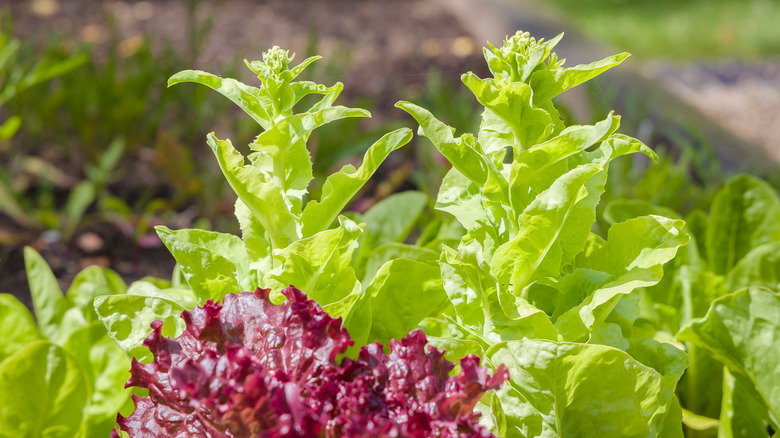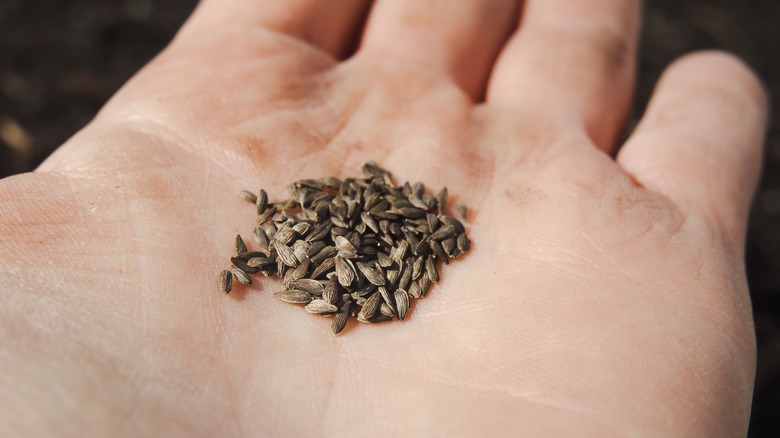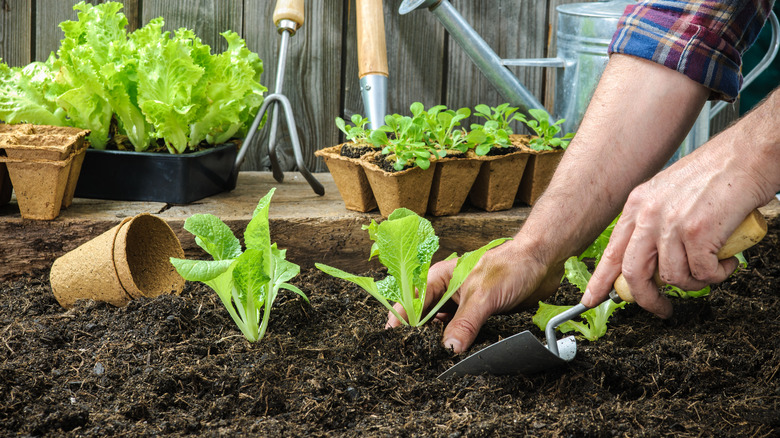How To Prevent Your Lettuce From Bolting
Are you getting more tall stems and flowers than succulent leaves from your lettuce beds? This is generally an indication that your plants have bolted — in other words, they've reached the stage of maturity where they're converting all their energy to producing tall flower stalks, and eventually, seeds. Experts are divided on whether you can prevent bolting, but there are a few strategies that savvy gardeners can employ. You can plant your lettuces as early as possible, store the seeds above 68 degrees Fahrenheit before planting, or choose selectively bred late-bolting varieties.
Lettuce bolting isn't bad if you're the kind of gardener who collects and stores seeds from particularly hardy or delicious plants for the next season. In this case, leaving a few plants to bolt, not eat, makes for smart growing. But it's far from desirable if you were planting for salad — bolted lettuce leaves are notoriously bitter. That bitterness comes from the latex the plant produces, which contains sesquiterpenoid lactone compounds. If the ratio of these compounds to the sweet glucose in the plant is higher, the leaves become unpalatable.
Lettuces and seed vernalization
Though longer daylight hours and warmer temperatures later in the growing season play a large part in lettuce bolting, the true cause of this phenomenon is a process called vernalization. When the seeds of Asters, the genus lettuces fall under, are exposed to temperatures under 68 degrees Fahrenheit, they're more likely to bolt as adults. This can especially be a problem when seeds are self-sown and overwinter in the soil, waiting to pop up again in spring as the weather warms. The solution is to store the seeds somewhere warmer before planting them out.
If you're growing in a controlled setting like indoors, a greenhouse, or a small backyard allotment, you can also try to replicate ideal conditions to prevent bolting. For example, in a study published in Environmental Control in Biology, researchers found that a period of low temperatures overnight (but not during the day), followed by a period of extended lighting at the end of the day, reduced bolting. This mimics the conditions most gardeners see in spring, suggesting planting lettuces in late winter could reduce bolting.
Plant late-bolting lettuce varieties
Lettuce bolting is such a problem that nurseries have developed late-bolting varieties for home gardeners and commercial growers. These lettuces are usually called heat tolerant on website listings, seed packets, and in-store seedling labels. In particular, look out for Batavian lettuces. Researchers have found that the Batavians — Nevada, Rouge de Grenoblouse, Sierra, and Tahoe — bolted slowest and, as a bonus, were also highly pest resistant. Want more varieties? Other, in-the-know, gardeners suggest trying the late-seeding varieties Red Sail, Black Seeded Simpson, and Simpon's Elite.
Other lettuce growing tips that may help to slow bolting are learning how to use succession planting (staggering planting your seeds over days or weeks instead of planting them all in one go), harvesting the leaves from the outside in, planting your lettuces in shady areas, and keeping them well hydrated. If, despite all your best efforts, you end up with a lot of bolted lettuce, all is not lost! You can compost them, or some people recommend still eating them. Add bolted lettuce leaves to soups and stews that are on the saccharine side, and the bitter flavor will complement the sweet notes.


